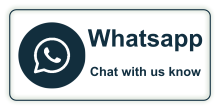HYBRID FUZZY-GENETIC APPROACH FOR ROUTE OPTIMISATION IN MANETS
DOI:
https://doi.org/10.29121/ijetmr.v12.i5.2025.1605Keywords:
Mobile Ad Hoc Networks (Manets), Fuzzy Logic, Genetic Algorithms, Hybrid Routing Protocols, Route Optimisation, Energy Efficiency, Dynamic Topology, Wireless Networks, Intelligent Routing, Network LifetimeAbstract
Research about Mobile Ad Hoc Networks (MANETs) intensifies because of their independent operation and wide functionality that includes military uses along with disaster recovery networks and automotive settings. The dynamic nature of their network topologies together with sparse resources leads to routing becoming an enduring complex issue. Standard networking standards fail to handle quick network topology changes effectively that results in reduced quality network delivery and longer delays and increased power usage. The research introduces the HFGA (Hybrid Fuzzy-Genetic Approach) that unites fuzzy logic with genetic algorithms to optimize route decisions through real-time adaptation. Through the fuzzy component the network evaluates energy levels of nodes and stability of links and queue lengths for making suitable node and link assessments that guide the genetic algorithm to generate optimal multi-hop paths via natural selection principles. NS-3 simulations show that HFGA delivers enhanced performance compared to AODV and DSR since it delivers higher packet delivery rates with minimized end-to-end delay and ensures balanced energy distribution along with longer network operational periods. The research adds important value to the development of intelligent routing mechanisms which meet next-generation wireless networks requirements.
Downloads
References
Abolhasan, M., Wysocki, T., & Dutkiewicz, E. (2004). A review of routing protocols for mobile ad hoc networks. Ad Hoc Networks, 2(1), 1-22. https://doi.org/10.1016/S1570-8705(03)00043-X
Boukerche, A. (Ed.). (2008). Algorithms and protocols for wireless and mobile ad hoc networks. John Wiley & Sons. https://doi.org/10.1002/9780470396384
Boukerche, A., Oliveira, H. A. B. F., Nakamura, E. F., & Loureiro, A. A. F. (2008). Vehicular ad hoc networks: A new challenge for localization-based systems. Computer Communications, 31(12), 2838-2849. https://doi.org/10.1016/j.comcom.2007.12.004
Cai, Z., Xu, H., & Wu, C. (2002). Performance analysis of routing protocols for ad hoc networks under different mobility models. Proceedings of the IEEE International Conference on Mobile Computing and Networking, 55-63.
Chakraborty, S., De, D., & Das, S. K. (2010). A fuzzy-based load-balanced routing protocol for mobile ad hoc networks. International Journal of Computer Applications, 8(5), 19-25.
Chlamtac, I., Conti, M., & Liu, J. J. N. (2003). Mobile ad hoc networking: Imperatives and challenges. Ad Hoc Networks, 1(1), 13-64. https://doi.org/10.1016/S1570-8705(03)00013-1
Clausen, T., & Jacquet, P. (2003). Optimized Link State Routing Protocol (OLSR). RFC 3626. https://doi.org/10.17487/RFC3626
Corson, M. S., & Macker, J. (1999). Mobile Ad hoc Networking (MANET): Routing protocol performance issues and evaluation considerations. RFC 2501. https://doi.org/10.17487/RFC2501
Goldberg, D. E., & Deb, K. (1991). A comparative analysis of selection schemes used in genetic algorithms. Foundations of Genetic Algorithms, 1, 69-93. https://doi.org/10.1016/B978-0-08-050684-5.50008-2
Haas, Z. J., & Pearlman, M. R. (2001). The zone routing protocol (ZRP) for ad hoc networks. Internet Draft, 1, 1-9.
Herrera, F., Lozano, M., & Verdegay, J. L. (2003). Tackling real-coded genetic algorithms: Operators and tools for behavioural analysis. Artificial Intelligence Review, 12(4), 265-319. https://doi.org/10.1023/A:1006504901164
Holland, J. H. (1975). Adaptation in Natural and Artificial Systems. University of Michigan Press.
Jiang, H., Wang, S., Sun, J., & Wu, Q. (2015). A hybrid intelligent approach based on fuzzy logic and genetic algorithm for QoS routing in MANETs. International Journal of Communication Systems, 28(6), 1125-1142.
Johnson, D. B., Hu, Y. C., & Maltz, D. A. (2007). The Dynamic Source Routing Protocol (DSR) for Mobile Ad Hoc Networks for IPv4. RFC 4728. https://doi.org/10.17487/RFC4728
Kachirski, O., & Guha, R. (2003). Effective intrusion detection using multiple sensors in wireless ad hoc networks. Proceedings of the 36th Annual Hawaii International Conference on System Sciences (HICSS'03). https://doi.org/10.1109/HICSS.2003.1173873
Kumar, S., Bansal, S., & Singh, R. (2010). Genetic algorithm-based optimization for load-balanced multipath routing in mobile ad hoc networks. International Journal of Computer Applications, 11(3), 9-16. https://doi.org/10.5120/289-451
Kumari, S., & Sharma, T. (2015). Load balancing routing protocol using genetic algorithm in MANET. International Journal of Computer Science and Information Technologies, 6(2), 1482-1485.
Malik, R., & Saluja, K. (2020). Hybridisation of genetic algorithm and fuzzy logic for energy-efficient and QoS-aware routing in MANETs. Wireless Networks, 26, 4871-4885.
Mamdani, E. H. (1974). Application of fuzzy algorithms for control of simple dynamic plant. Proceedings of the Institution of Electrical Engineers, 121(12), 1585-1588. https://doi.org/10.1049/piee.1974.0328
Mishra, A., Agrawal, S., & Tiwari, A. (2011). A review on mobile ad hoc network using hybrid routing protocol. International Journal of Engineering and Technology, 3(2), 135-140.
Perkins, C. E., & Bhagwat, P. (1994). Highly dynamic destination-sequenced distance-vector routing (DSDV) for mobile computers. ACM SIGCOMM Computer Communication Review, 24(4), 234-244. https://doi.org/10.1145/190809.190336
Perkins, C. E., & Royer, E. M. (1999). Ad-hoc on-demand distance vector routing. Proceedings of the Second IEEE Workshop on Mobile Computing Systems and Applications, 90-100. https://doi.org/10.1109/MCSA.1999.749281
Royer, E. M., & Toh, C. K. (1999). A review of current routing protocols for ad hoc mobile wireless networks. IEEE Personal Communications, 6(2), 46-55. https://doi.org/10.1109/98.760423
Sarkar, S. K., Basavaraju, T. G., & Puttamadappa, C. (2011). Ad Hoc Mobile Wireless Networks: Principles, Protocols, and Applications. Auerbach Publications.
Toh, C. K. (2001). Ad Hoc Mobile Wireless Networks: Protocols and Systems. Prentice Hall.
Wang, J., Hu, H., & Zhu, H. (2006). Fuzzy-based load balancing for MANETs. Proceedings of the International Conference on Communications and Networking in China.
Zadeh, L. A. (1965). Fuzzy sets. Information and Control, 8(3), 338-353. https://doi.org/10.1016/S0019-9958(65)90241-X
Zhou, L., & Haas, Z. J. (1999). Securing ad hoc networks. IEEE Network, 13(6), 24-30. https://doi.org/10.1109/65.806983
Published
How to Cite
Issue
Section
License
Copyright (c) 2025 Kuldeep Sharma, Dr. Saurabh Gupta, Dr. Vivek Jaglan

This work is licensed under a Creative Commons Attribution 4.0 International License.
License and Copyright Agreement
In submitting the manuscript to the journal, the authors certify that:
- They are authorized by their co-authors to enter into these arrangements.
- The work described has not been formally published before, except in the form of an abstract or as part of a published lecture, review, thesis, or overlay journal.
- That it is not under consideration for publication elsewhere.
- That its release has been approved by all the author(s) and by the responsible authorities – tacitly or explicitly – of the institutes where the work has been carried out.
- They secure the right to reproduce any material that has already been published or copyrighted elsewhere.
- They agree to the following license and copyright agreement.
Copyright
Authors who publish with International Journal of Engineering Technologies and Management Research agree to the following terms:
- Authors retain copyright and grant the journal right of first publication with the work simultaneously licensed under a Creative Commons Attribution License (CC BY-SA 4.0) that allows others to share the work with an acknowledgment of the work's authorship and initial publication in this journal.
- Authors can enter into separate, additional contractual arrangements for the non-exclusive distribution of the journal's published version of the work (e.g., post it to an institutional repository or edit it in a book), with an acknowledgment of its initial publication in this journal.
- Authors are permitted and encouraged to post their work online (e.g., in institutional repositories or on their website) before and during the submission process, as it can lead to productive exchanges, as well as earlier and greater citation of published work.
For More info, please visit CopyRight Section






























